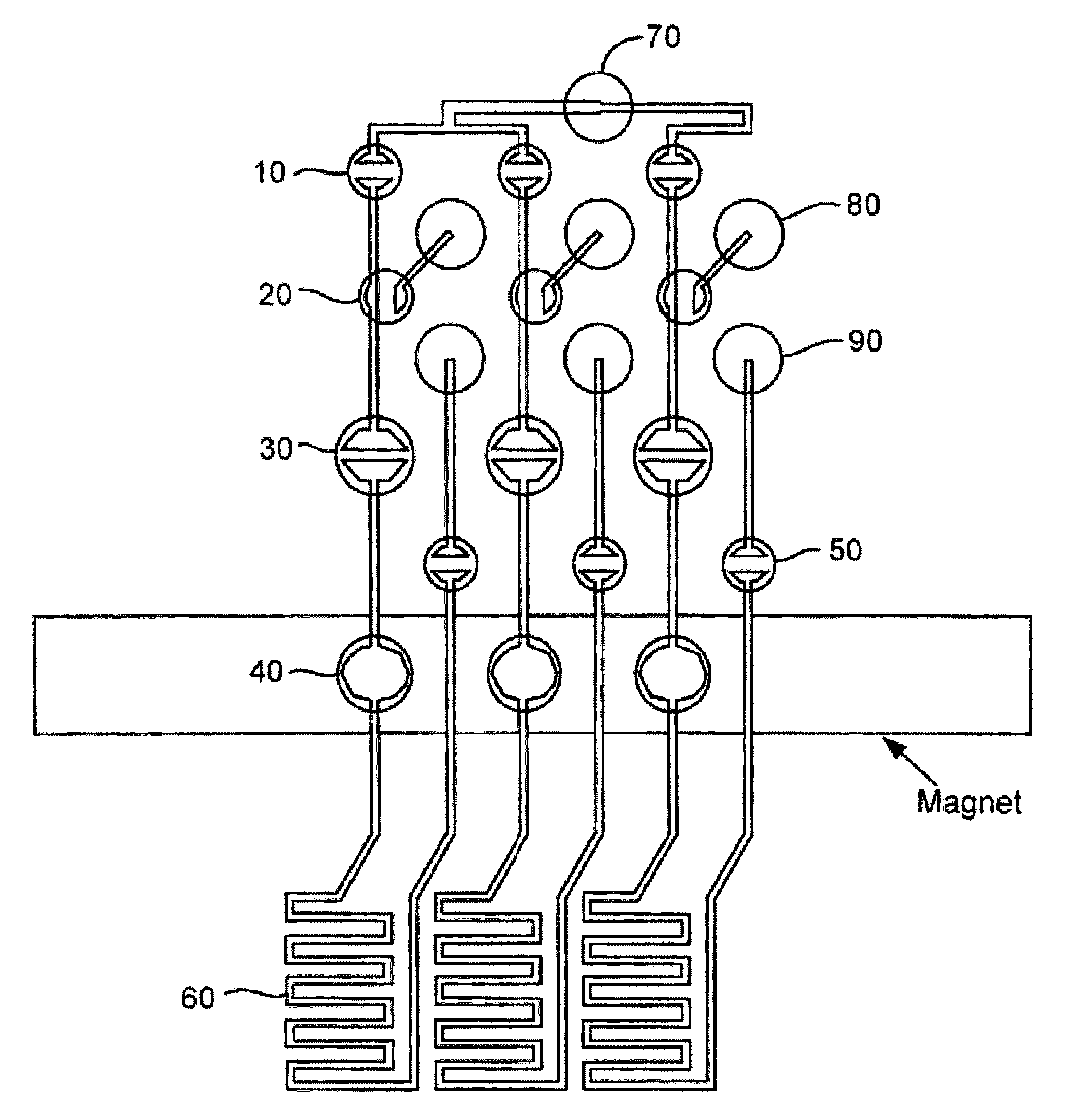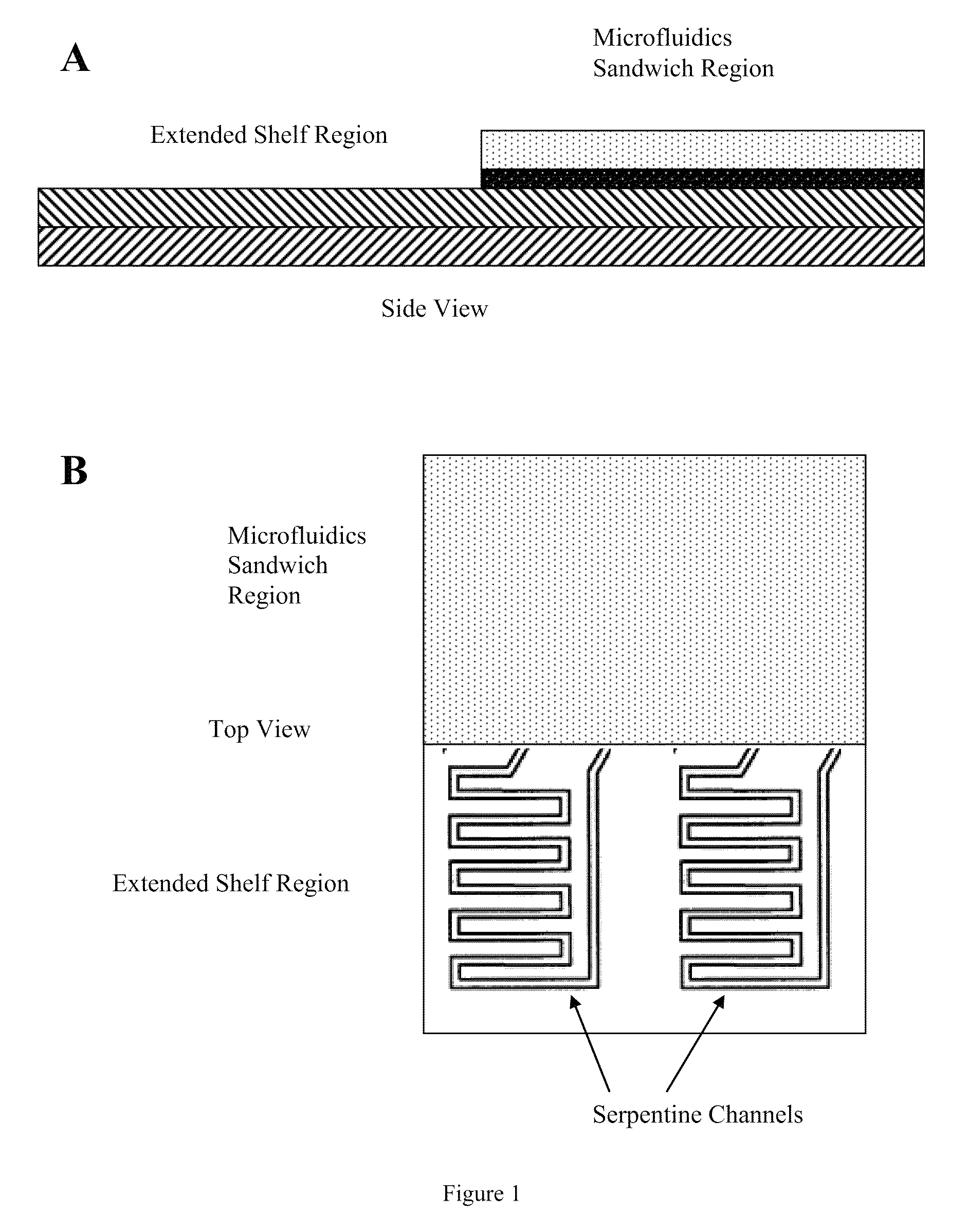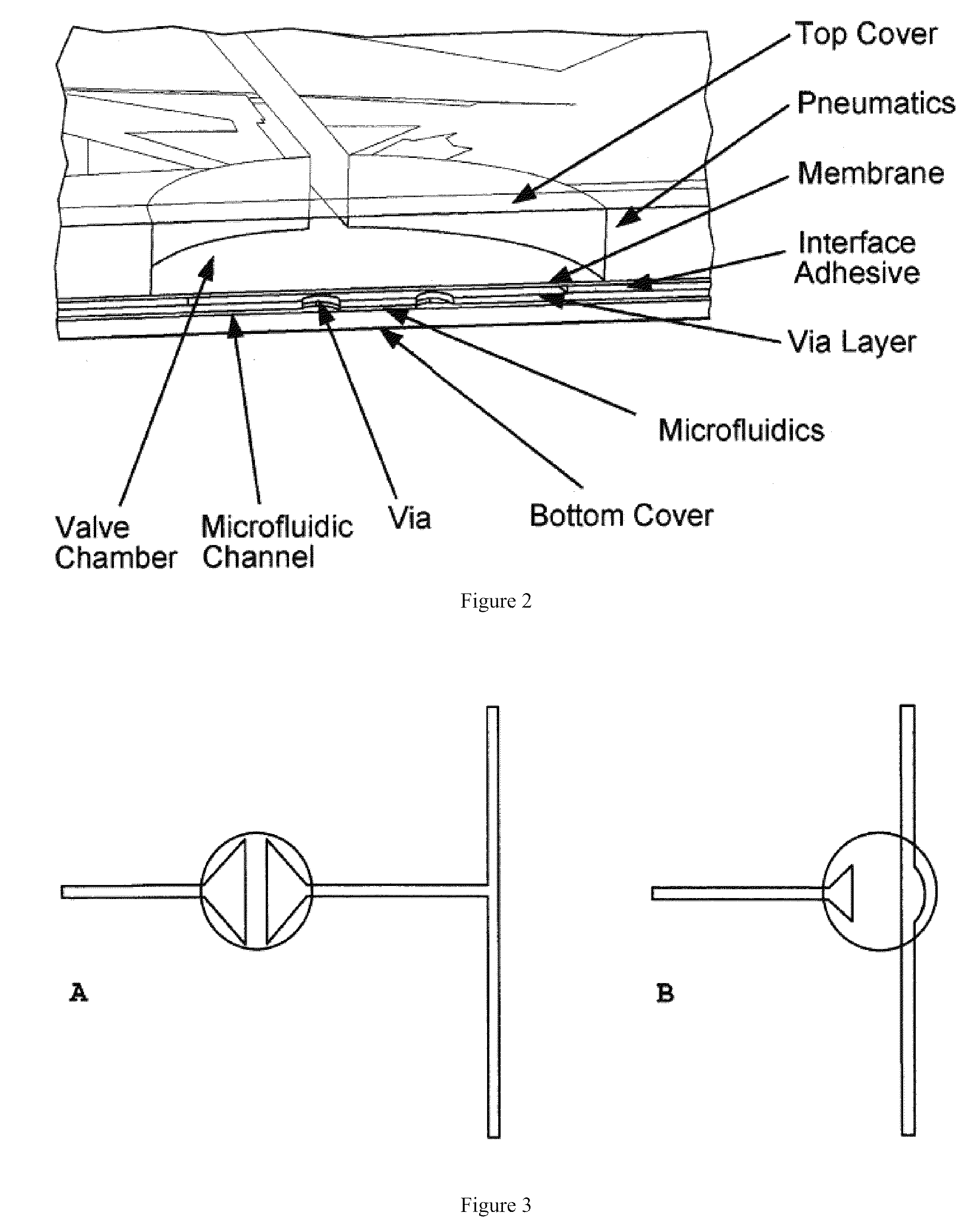Microfluidic methods
a technology of microfluidic devices and microfluidic devices, which is applied in the direction of diaphragm valves, laboratory glassware, engine diaphragms, etc., can solve the problems of incompatibility between microfluidic devices and existing upstream purification and downstream analytical devices
- Summary
- Abstract
- Description
- Claims
- Application Information
AI Technical Summary
Benefits of technology
Problems solved by technology
Method used
Image
Examples
Embodiment Construction
[0069]I. Microfluidic Chip Device
[0070]The present disclosure provides systems comprising microfluidic chip devices and thermal regulators and methods of use of the devices. The systems disclosed herein find use in the preparation and analysis of target analytes, including processing biochemical or chemical samples, the analysis of target analytes, or the recovery of processed biochemical or chemical samples for analysis in a separate device. In one aspect, the microfluidic chip device comprises a first region and a second region (FIG. 1). As depicted in FIG. 2, the first region, or microfluidics sandwich region, has multiple layers comprising a fluidics layer comprising fluidic channels; a pneumatics layer comprising pneumatic channels; and an actuation layer (e.g., an elastomeric layer) sandwiched between the fluidics layer and the pneumatic layer, wherein the sandwich comprises Micro-Robotic on-Chip Valve and Pump valves (MOVe) to regulate fluid flow in the fluidics channels. The...
PUM
 Login to View More
Login to View More Abstract
Description
Claims
Application Information
 Login to View More
Login to View More - R&D
- Intellectual Property
- Life Sciences
- Materials
- Tech Scout
- Unparalleled Data Quality
- Higher Quality Content
- 60% Fewer Hallucinations
Browse by: Latest US Patents, China's latest patents, Technical Efficacy Thesaurus, Application Domain, Technology Topic, Popular Technical Reports.
© 2025 PatSnap. All rights reserved.Legal|Privacy policy|Modern Slavery Act Transparency Statement|Sitemap|About US| Contact US: help@patsnap.com



